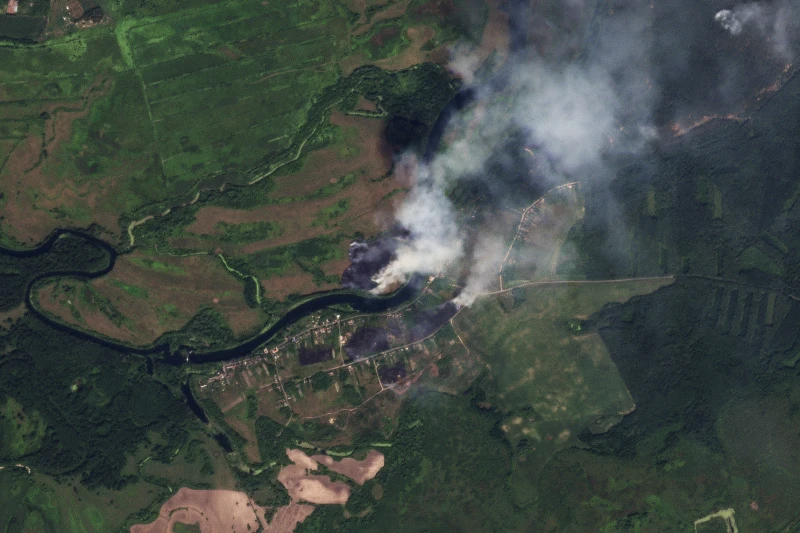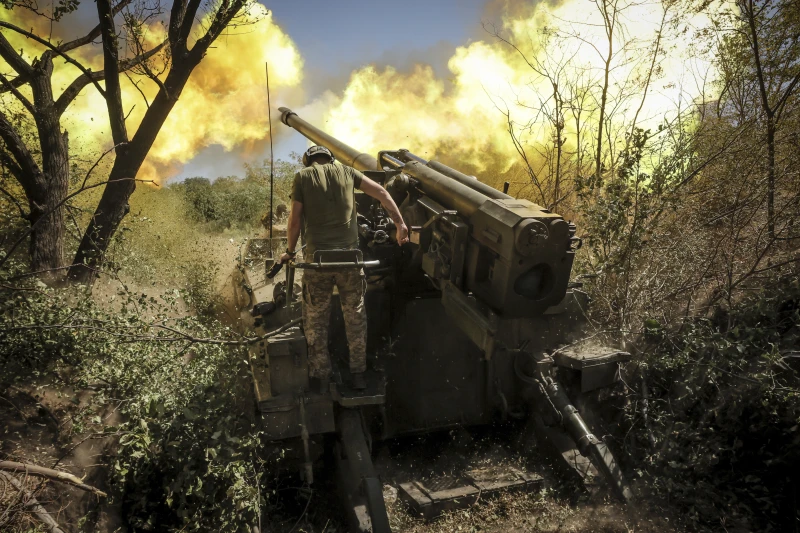The ongoing conflict between Russia and Ukraine, which flared dramatically in early 2022, has continued to evolve with alarming developments, particularly in the realm of drone warfare.
Recent reports indicate that Moscow has endured one of the most significant drone attacks perpetrated by Ukrainian forces. In an assertion by Russian authorities, the capital was targeted in what Moscow Mayor Sergei Sobyanin described as an unprecedented attempt to strike the heart of Russian power.
This event not only exemplifies the increasing boldness and capability of the Ukrainian military but also marks a substantial shift in the dynamics of the conflict, which has been characterized by intense fighting along the border and consequent military operations within previously considered secure territories.
The latest wave of drone assaults on Moscow represents an escalation in Ukraine’s military strategy, reflecting a shift from defensive operations to offensive incursions that reach deep into Russian territory.
According to official reports from Moscow, Russian air defenses successfully intercepted all drones aimed at the city, destroying a total of 45 unmanned aerial vehicles (UAVs) during the attack.
This raises critical questions about the effectiveness of Russian air defense systems and the resilience of Ukraine’s drone warfare capabilities.
Despite the official figures claiming success in neutralizing these threats, the independent verification of such statistics remains elusive, often leading to skepticism about the accuracy of state media reports amid a backdrop of intense propaganda.
The increasing frequency and scope of drone attacks can be associated with Ukraine’s broader military objectives, which include targeting key infrastructure such as oil refineries, bridges, and airfields within Russian territory.
Over the past week alone, Ukrainian forces have reportedly struck three bridges in the Kursk region, an area that has become a focal point for military operations.
These actions aim not only to disrupt the logistics of the Russian military but also to instill a sense of vulnerability within the Russian populace, effectively bringing the war to the civilian landscape.
The implications of Ukraine’s daring strategy extend beyond immediate military engagements. The Russian response, which includes declarations of thwarted incursions into regions such as Bryansk, underlines the heightened state of alert in Russian border areas.
Governor Alexander Bogomaz’s reference to Ukrainian forces as a “sabotage and reconnaissance group” illustrates the framing of Ukraine’s military actions as threats to national security, further deepening the narrative of an existential struggle.
The morale boost for Ukrainian forces resulting from recent successes cannot be understated. These incursions are seen as a testament to the resilience and determination of Ukraine in the face of overwhelming odds.
In contrast, the Russian narrative has increasingly focused on portraying Ukraine’s actions as terroristic and unprovoked.
Maria Zakharova, a spokeswoman for the Russian Foreign Ministry, categorically rejected the prospect of peace negotiations, citing Ukraine’s recent actions as a justification for the cessation of dialogue.
This rhetoric indicates a hardening of positions on both sides, suggesting that the avenue for diplomatic resolution may be further away than at any point since the onset of hostilities.
Moreover, the human cost of these military operations is stark. Reports from Russian state news indicate that operations in and around Kursk have resulted in numerous casualties, including fatalities among civilians.
These figures, while difficult to verify, highlight the toll that continued military engagement is exerting on the civilian population and the humanitarian crisis that is unfolding.
The aftermath of the attacks, including the reported damage to a car in Kursk that resulted in the death of one woman, underscores the perilous reality faced by those living in conflict zones, where the lines between military and civilian areas are increasingly blurred.
In a notable affirmation of adherence to international humanitarian law, Ukraine has publicly declared its commitment to respecting the Geneva Conventions, which govern the conduct of armed conflict and seek to protect those who are not participating in hostilities.
This declaration was underscored by the remarks of Ukraine’s Interior Minister, Ihor Klymenko, who announced the establishment of a humanitarian and medical aid office within the Kursk region, aimed at assisting the local population, particularly the vulnerable demographic of elderly Russian civilians, over 90% of whom are aged 60 and older.
Klymenko emphasized the moral imperative of providing aid, stating, “We have no right to leave them there to die,” as reported by the Ukrinform national news agency.
This humanitarian initiative comes amidst ongoing military operations, wherein Ukrainian forces have targeted three critical bridges over the Seym River in Kursk, a strategic maneuver that could potentially encircle Russian military units by restricting their movement between the river, the advancing Ukrainian forces, and the border of Ukraine.
The Institute for the Study of War, based in Washington, D.C., has indicated that Ukrainian strikes have specifically focused on Russian pontoon bridges and engineering equipment in the area west of the frontline, suggesting a tactical effort to impede Russian logistical capabilities.
Recent satellite imagery analyzed by The Associated Press has revealed significant fires along the Seym River, particularly near the village of Krasnooktyabrskoe, indicative of intense combat and the aftermath of military strikes.
In contrast, the Russian Defense Ministry reported that its forces successfully repelled attempts by Ukrainian assault groups to advance in the Kursk region, claiming that over the past 24 hours, more than 45 Ukrainian soldiers were either killed or wounded, with two captured during combat operations.
However, these figures remain unverified by independent sources, and the Ukrainian military has refrained from commenting on the Russian assertions, highlighting the complexities and uncertainties that characterize the ongoing conflict.
As the conflict in Ukraine evolves, the recent drone attacks on Moscow signal a critical juncture in the Russo-Ukrainian war.

This escalation not only reflects the tactical ingenuity of the Ukrainian military but also lays bare the vulnerabilities of Russian defenses and the potential for further destabilization in the region.
The ongoing exchanges of military action and political rhetoric foster an environment rife with hostility, complicating any prospects for peace.
Consequently, the international community must monitor these developments closely, understanding that the implications of this conflict extend far beyond the immediate theater of war, potentially influencing geopolitical stability for years to come.
As both sides dig in, the return to diplomatic negotiations appears precarious, with each new military encounter further entrenching the enmity between the nations and complicating the resolution of one of the most significant conflicts in modern history.
